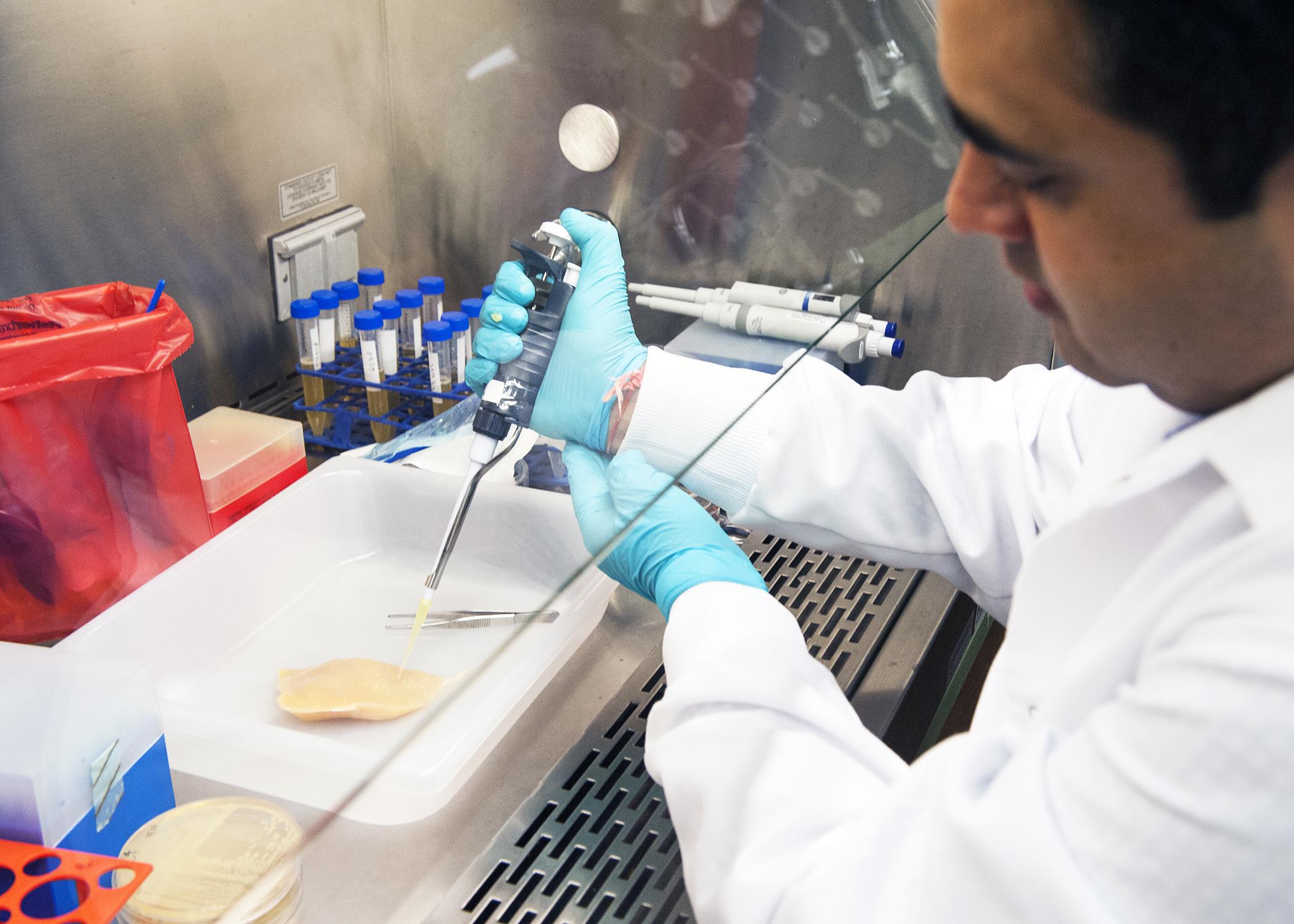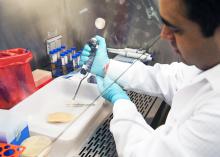Information Possibly Outdated
The information presented on this page was originally released on January 8, 2016. It may not be outdated, but please search our site for more current information. If you plan to quote or reference this information in a publication, please check with the Extension specialist or author before proceeding.
MSU researchers fight poultry pathogens
By Sarah Buckleitner
Mississippi Agricultural and Forestry Experiment Station
Scientists at Mississippi State University are working to rid poultry products of bacteria that can cause foodborne illness before they leave the processing plant.
Foodborne illness is a serious concern among producers, processors and consumers. Each year, a million people in the U.S. contract foodborne illnesses from Campylobacter jejuni, or C. jejuni, common bacteria found in healthy poultry and cattle.
MSU scientists recently tested the use of lauric arginate, a naturally derived, antimicrobial compound approved by the U.S. Department of Agriculture, as a preservative to assist in the fight against C. jejuni.
Chander Sharma, Mississippi Agricultural and Forestry Experiment Station researcher and assistant professor in the MSU Department of Poultry Science, said the compound has been tested on other pathogens, but his research provided needed information.
“There is limited data on the use of lauric arginate against C. jejuni in the meat system,” Sharma said.
MSU scientists conducted a series of experiments to determine the effectiveness of lauric arginate on C. jejuni.
The first experiment tested the effectiveness of lauric arginate on a pure culture of C. jejuni. Researchers placed samples of the bacteria in test tubes along with varying solutions of the preservative. Lauric arginate was very effective at destroying the bacteria. Scientists found no remnants of the microorganism.
They then coated the outside of raw chicken breast fillets with C. jejuni, treated them with lauric arginate, packaged the meat and refrigerated it for a week. Researchers took samples periodically to determine if lauric arginate had removed the bacteria.
“At day seven, we had a 94-95 percent reduction of C. jejuni in the inoculated chicken breast,” Sharma said. “The preservative also reduced Salmonella by 80-90 percent.”
These results could be used by poultry processing companies during the post-chilling process on cut-up parts.
Despite the rigorous testing and careful application of antimicrobials to poultry, it is important for consumers to practice safe food handling in their own kitchens, said Divek Nair, a former graduate assistant at MSU and current doctoral student at the University of Minnesota, who worked on the research under Sharma’s direction.
“Even with stringent preharvest and meat inspection procedures in place, consumers should take safety measures to reduce the risk of contracting foodborne illnesses,” Nair said. “There are a number of precautions consumers can take, such as cooking meat to proper temperatures, preventing cross-contamination by keeping utensils and surface areas clean, washing hands during meal preparation and storing food at proper temperatures.”
Food safety experts also recommend not washing poultry and other raw meat products; the process can cause splashing that spreads the contaminants.
This research is one of many projects at MSU that contributes to providing a hungry world with a safe and reliable food supply. Read more about this research at http://www.mafes.msstate.edu.
Released: January 8, 2016
Contact: Dr. Chander Sharma, 662-352-2017





